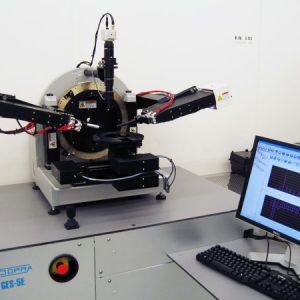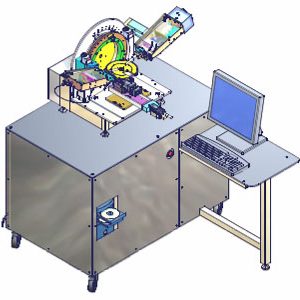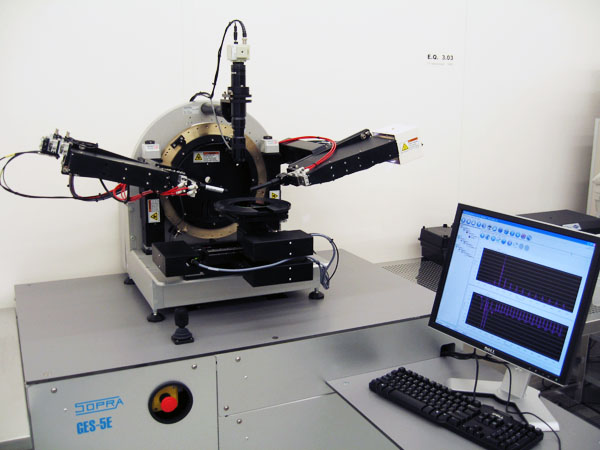
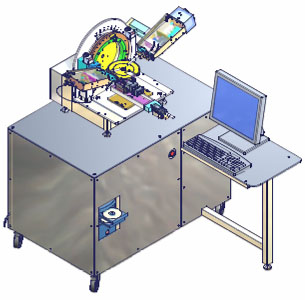
Note: Only the spectrograph is fully calibrated (The spectrometer has to be considered as not operational).
Contents
I. Introduction ↑
The spectroscopic ellipsometer is used to measure the thicknesses and the refractive indices of thin films (transparent or not).
The ellipsometer allows the study of properties of materials:
- Dielectric and semi-conductor films such as silicon dioxide, silicon nitride, polysilicon and amorphous silicon.
- Metallic films (Note: Generally, the film needs to be really thin)
- Organic layers such as carbon and photosensitive resists.
II. The ellipsometry in few words ↑
The spectroscopic ellipsometry is an optical technique using the properties of polarized light, after its interaction with surfaces, to determine refractive indexes and thicknesses of thin films (from a few A to several um depending on material type).
When a linearly polarized light is directed onto the surface of a material with a certain angle of incidence, it can be expressed through its parallel (s-) and perpendicular (p-) components. After reflection on the surface, these components change resulting in an elliptically polarized light.
The ellipsometry uses this phenomenon to give an estimation of the thickness of a transition region between the substrate and the air by measuring the ratio Rp/Rs, the reflection coefficients of s- and p- components. It can be written as :

with Ψ and Δ related to the thickness and the refractive index of the film.
It is important to remind that: the ellipsometer does not directly measure the refractive index (n) or the thickness (t) of the thin film. An algorithm has to be used the resolve n and t based on values of Ψ and Δ measured.
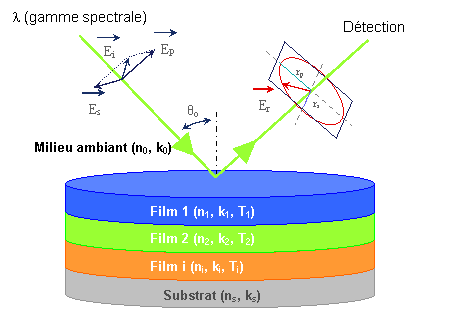
For a given wavelength, Ψ plotted as a function of Δ results in a periodic curve1 for each value of the refractive index (if the material is transparent with k = 0).
The size and position of the curves are optical constants, nature of the substrate, and angle of incidence dependent. Therefore, for a given refractive index, each set Ψ / Δ represents a certain “periodic” thickness. It means that for a given refractive index, the thickness follows its specific and periodic ellipsometric curve.
The measurement in a spectral range cancels the ambiguity related to the use of a single wavelength.
1: For absorbent layers where k ≠ 0, the corresponding graphs are not periodic but have a spiral shape (the corresponding thickness values do not repeat with a constant period)
For more details, do not hesitate to visit Ellipsometry Tutorial from J.A. Woollam compagny.
III. Equipment description ↑
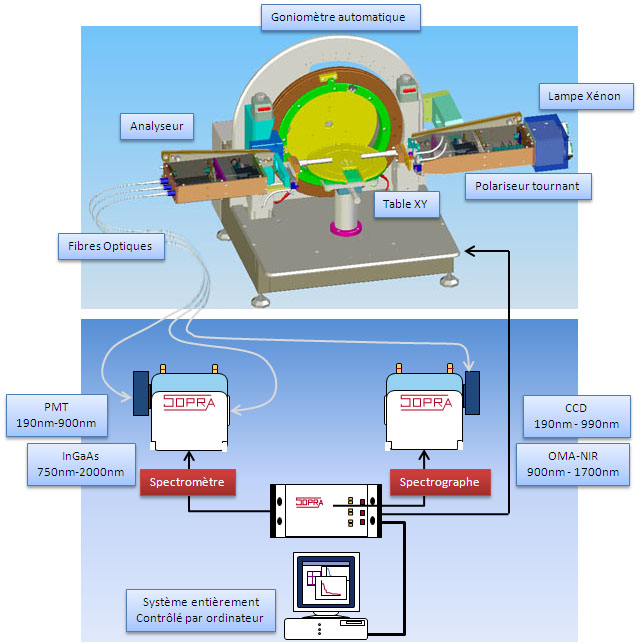
Substrate size
The system accepts:
- Up to 200 mm wafers.
- Chips with a surface for the measurement bigger than the cross-section of the incident beam.
Source
- Xenon lamp 75 W – Wavelength range: From 185 nm to 2500 nm (UV – Visible light – NIR).
- The light coming from the lamp goes through:
- A rotating polarizer to give a linearly polarized light.
- Then a compensator (A quarterwave plate) to give a circular polarized light.
Goniometer & Arms
The system is equipped with:
- Two arms : The polarizer arm & the analyser arm.
- High quality prisms made of MgF2.
- The analyser arm is connected to the spectrometer/spectrograph through a optical fiber.
- A motorized goniometer:
- 0.007 ° resolution.
- The incidence angle can be selected from 20° to 90° to be close to the optimal angle (Brewster angle – Material dependent)
Spectrograph & Spectrometer
Two systems are available for the analysis of signals after reflection of the light on the the surface of the material:
- A fast spectrograph:
- Main unit :
- UV-Visible 190 – 990 nm.
- 1024 x 64 pixels – CCD sensor.
- Bandwidth FWHM (Full Width Half Maximum) : less than 3 nm over the entire spectrum.
- Extension :
- NIR 900 – 1700 nm
- 256 pixels – Linear sensor.
- Bandwidth FWHM (Full Width Half Maximum) : less than 9 nm over the entire spectrum.
- Main unit :
- A high resolution spectrometer:
- Main unit:
- UV-Visible 190 – 900 nm
- Network and Prism double stage monochromator.
- Photomultiplier tube (PMT).
- Modus operandi: photon counting.
- Spectral resolution: <0.5 nm.
- Extension:
- NIR 750 – 2000nm
- P-doped InGaAs diode.
- Spectral resolution: <3 nm.
- Main unit:
Spot Size
- Standard mode :
- Size : From 1 to 5 mm.
- Microspot mode:
- Automatic electropneumatic positioning of the microspot.
- Usable to get rid of the reflection on the backside of transparent substrate (Thicker than 300 um).
- Working spectral range with the microspot: 210 – 2000 nm.
- Size : Typically smaller than 365 µm x 1mm (Incidence angle and wavelength dependent).
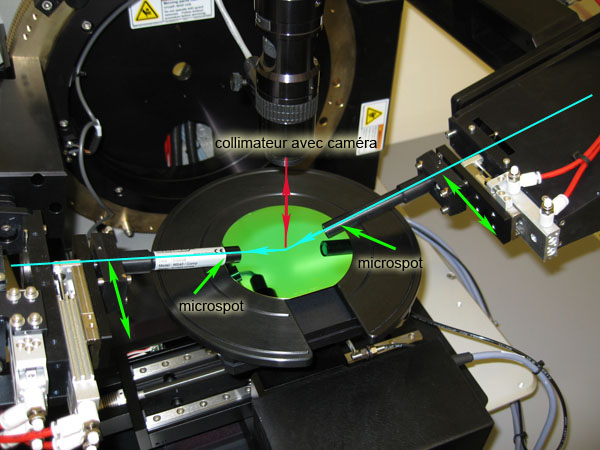
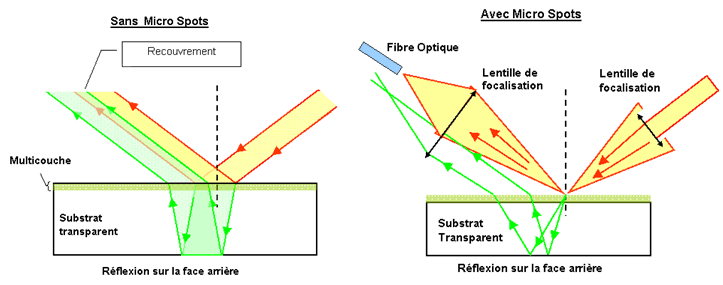
Compensator
- Automatic electropneumatic positioning of the compensator.
- Composed of 2 prisms and 1 mirror.
- Working spectral range with the compensator: 190 – 2000 nm.
- Adapted for the measurement of transparent layers deposited on transparent substrate.
Table X-Y-Z
- XY stage mapping.
- X & Y resolution : +/- 0.25µm.
- Motorized Z + Autofocus.
